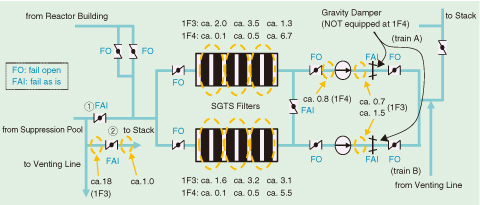
Fig.1-39 Dosimetries at standby gas treatment system (SGTS) filters for 1F3 and 1F4 (unit: mSv/h)
On March 11, 2011, an earthquake and subsequent tsunami resulted in a severe accident at the TEPCO’s Fukushima Daiichi NPS (1F). Four independent committees were established by the Japanese government, the Diet of Japan, the Rebuild Japan Initiative Foundation, and the TEPCO to investigate the accident and published their respective reports. In addition, the Nuclear and Industrial Safety Agency analyzed the causes of the accident to obtain the lessons learned from it.
This study reviews the five reports, clarifies the differences in their positions, from a technological point of view, and identifies undiscussed issues to obtain insights useful for near-term regulatory activities, including the accident investigation by the Nuclear Regulation Authority. As a result, the different positions identified are related to the reason of emergency diesel generator trips, the reason of manual trip of the isolation condensers at 1F1, reactor depressurization at 1F1, containment integrity and venting operation, and the hydrogen leak path. For example, the hydrogen explosions at 1F1 and 1F3 are assumed to be the result of hydrogen leaking directly from the containments, and the explosion at 1F4 is assumed to be caused by reverse hydrogen flow from 1F3 during venting. This study pointed out that the contribution of venting gases should be further examined based on the fact that containment venting was executed shortly before the explosions at 1F1 and 1F3 and on the measured dosimetries on the standby gas treatment system (SGTS) filters (Fig.1-39).
In addition, the following undiscussed issues are identified.
(1) Adequacy of Operating Procedures Applied at 1F1: In-depth analysis of the basic concepts for preparing the operating procedures by comparison with those at Tsuruga 1F1 is required.
(2) Design Concepts of SGTS Valves on Loss of Drive Forces: The design concepts of “fail open” and “fail as is” when the drive force for the valves is lost should be clarified by examining the actual designs at other plants.
(3) Design Concepts of Valves Configured in Containment Venting Lines: The design concepts for the venting lines, which consist of one rupture disk and two normally closed valves placed in series, should be studied.
(4) Operating Basis of Startup of Containment Cooling Systems: Although suppression pool cooling was initiated after the earthquake at 1F1 and 1F2, it was not started up at 1F3 considering the effects of tsunami-induced kataseism. It is necessary to identify the causes of this difference.